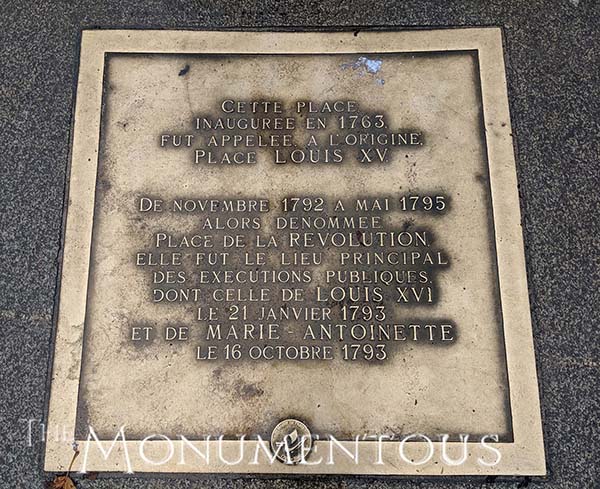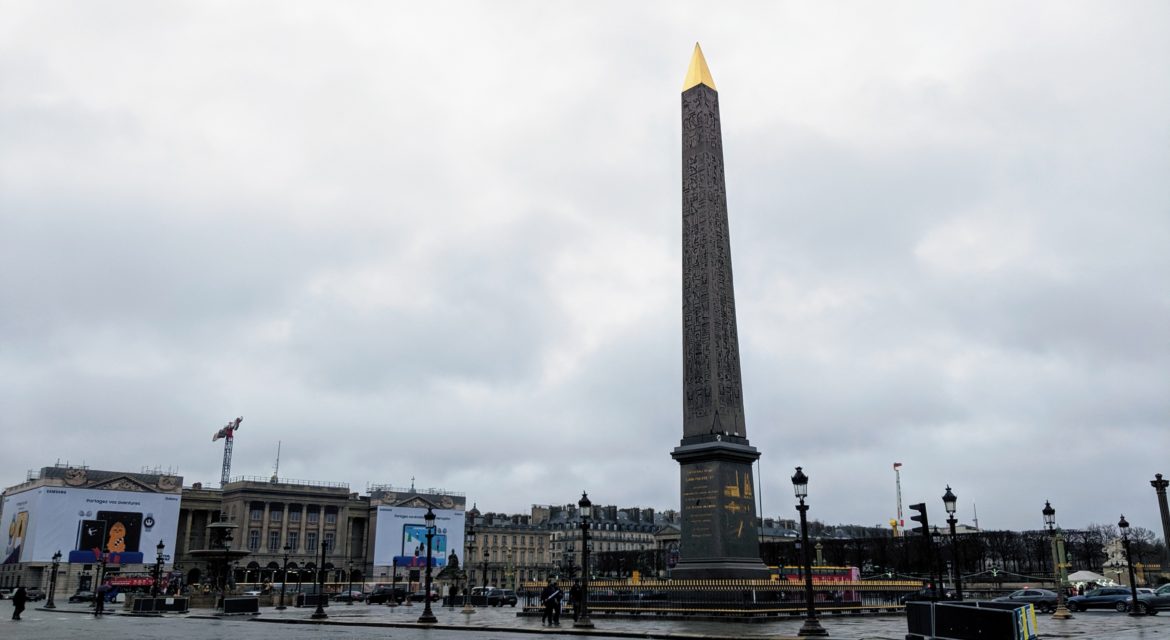 As the largest square in Paris, the Place de la Concorde is notable for both its history and the distinctive monuments that it features. Like other squares that feature significant history as well incredible monuments, the Place de la Concorde has become an important draw for Paris that attracts residents and tourists for different reasons.
As the largest square in Paris, the Place de la Concorde is notable for both its history and the distinctive monuments that it features. Like other squares that feature significant history as well incredible monuments, the Place de la Concorde has become an important draw for Paris that attracts residents and tourists for different reasons.

The Site of Many Notable Public Executions
 Created in 1772, the Place de la Concorde was originally known as the Place Louis XV to honor the king. An equestrian statue of Louis XV was featured in the space, but that statue was torn down and the area renamed the Place de la Révolution in 1789 during the French Revolution. King Louis XVI was executed in the space in 1793, and it further became the site of many notable public executions. Between 1836 and 1846 the architect Jacques-Ignace Hittorf redesigned the square to become what it is today.
Created in 1772, the Place de la Concorde was originally known as the Place Louis XV to honor the king. An equestrian statue of Louis XV was featured in the space, but that statue was torn down and the area renamed the Place de la Révolution in 1789 during the French Revolution. King Louis XVI was executed in the space in 1793, and it further became the site of many notable public executions. Between 1836 and 1846 the architect Jacques-Ignace Hittorf redesigned the square to become what it is today.
In ensuing years, the square underwent several changes of name, becoming at various times Place de la Chartre, Place Louis XV again, and Place Louis XVI. It first became the Place de la Concorde in 1795 and regained that name in 1830.
This history has helped shape and define the monuments that it contains as well as the experiences for both residents and tourists.

The Luxor Obelisk, Fontaines de la Concorde and More
 At 74.9 feet in height, the Luxor Obelisk is the most notable feature of the Place de la Concorde. Installed at the center of the square in 1836, the obelisk was originally constructed in about 1300 B.C. and situated outside of Luxor Temple in Egypt. It is decorated with hieroglyphs that pay homage to the reign of Ramses II. It features a gold-leafed pyramid cap that was added to the top by the government of France in 1998.
At 74.9 feet in height, the Luxor Obelisk is the most notable feature of the Place de la Concorde. Installed at the center of the square in 1836, the obelisk was originally constructed in about 1300 B.C. and situated outside of Luxor Temple in Egypt. It is decorated with hieroglyphs that pay homage to the reign of Ramses II. It features a gold-leafed pyramid cap that was added to the top by the government of France in 1998.
On either side of the Obelisk are two fountains that have come to symbolize all of the fountains in Paris. Both fountains feature a stone basin with six figures of tritons holding fish spouting water, six seated allegorical figures and four statues of different forms of genius in arts or crafts supporting the upper inverted upper vasque. Water is shot up and then cascades down to the lower vasque and then the basin. The north fountain is devoted to the Rivers while the south fountain represents the seas.
These features have helped ensure the Place de la Concorde to become an essential stop for visitors that is featured on maps and guides of Paris. However, it has also become an important gathering place for residents and events that take place throughout the year.
A temporary stand is built in the square each year from which dignitaries review the military parade on Bastille Day. This impact for both residents and tourists showcases what it can mean for a space to create a legacy that incorporates the history of a space but also goes beyond it for the benefit of audiences in the present and future.

Beyond the Crossroads of a Legacy
 Since the Place de la Concorde is within eyesight of the Eiffel Tower and Louvre Pyramid but also located between the Tuileries Gardens and the western terminus of the Champs-Élysées, this area would be important regardless of what resided in it. However, by creating a space for residents to gather for events as well as a place that houses such notable monuments, the Place de la Concorde highlights what it can mean for a space to serve as more than the crossroads of a legacy. It has enabled an entirely new destination for Parisians and visitors that is tied into but also builds upon the legacy of the city and all of France.
Since the Place de la Concorde is within eyesight of the Eiffel Tower and Louvre Pyramid but also located between the Tuileries Gardens and the western terminus of the Champs-Élysées, this area would be important regardless of what resided in it. However, by creating a space for residents to gather for events as well as a place that houses such notable monuments, the Place de la Concorde highlights what it can mean for a space to serve as more than the crossroads of a legacy. It has enabled an entirely new destination for Parisians and visitors that is tied into but also builds upon the legacy of the city and all of France.

